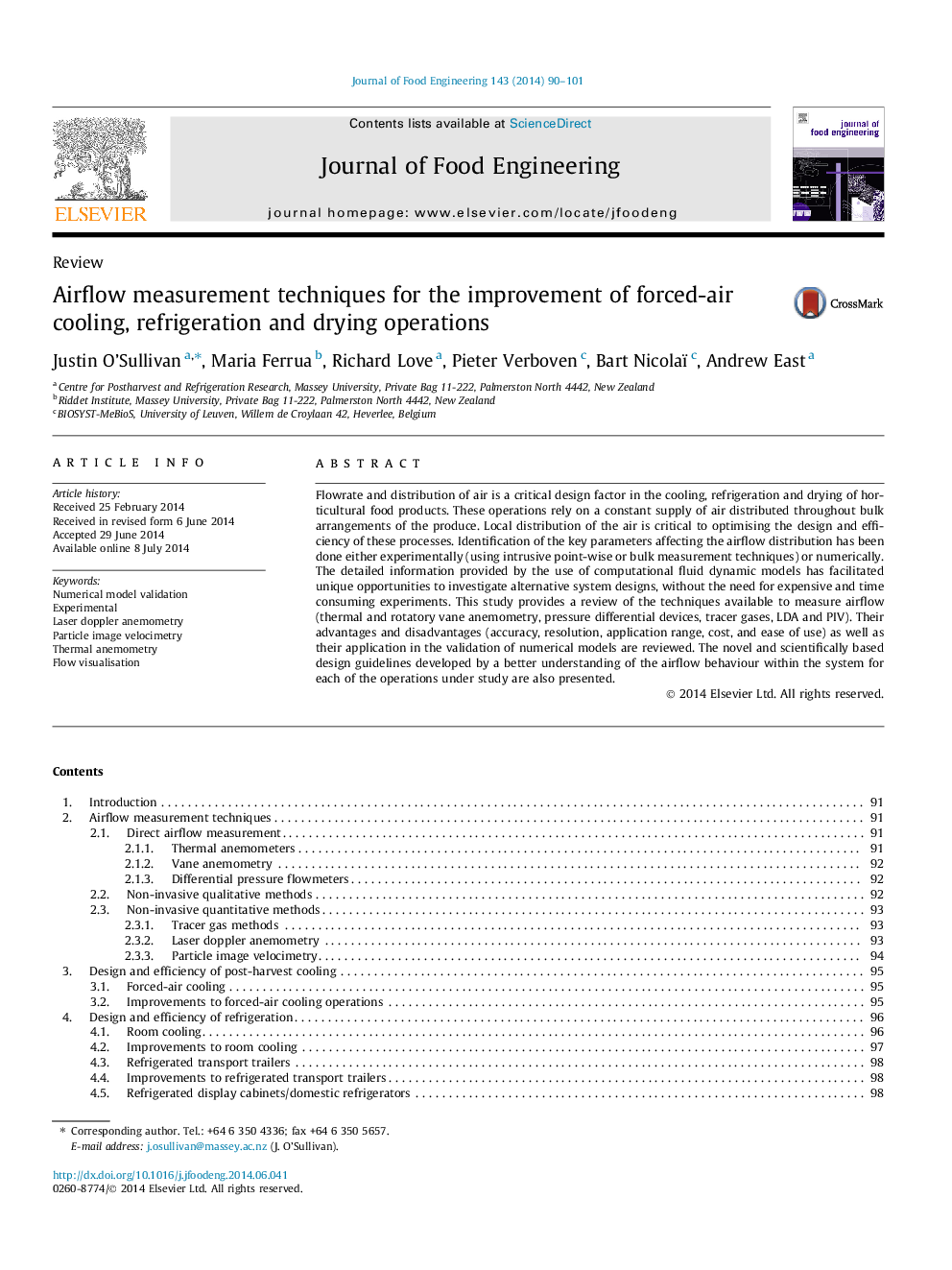| Article ID | Journal | Published Year | Pages | File Type |
|---|---|---|---|---|
| 223051 | Journal of Food Engineering | 2014 | 12 Pages |
•Air distribution is important to the performance of food operations.•Measurement techniques are point-wise or bulk and have validated numerical models.•Airflow measurements can improve the understanding of current operations.•Operation performance can be improved by design features identified by these techniques.
Flowrate and distribution of air is a critical design factor in the cooling, refrigeration and drying of horticultural food products. These operations rely on a constant supply of air distributed throughout bulk arrangements of the produce. Local distribution of the air is critical to optimising the design and efficiency of these processes. Identification of the key parameters affecting the airflow distribution has been done either experimentally (using intrusive point-wise or bulk measurement techniques) or numerically. The detailed information provided by the use of computational fluid dynamic models has facilitated unique opportunities to investigate alternative system designs, without the need for expensive and time consuming experiments. This study provides a review of the techniques available to measure airflow (thermal and rotatory vane anemometry, pressure differential devices, tracer gases, LDA and PIV). Their advantages and disadvantages (accuracy, resolution, application range, cost, and ease of use) as well as their application in the validation of numerical models are reviewed. The novel and scientifically based design guidelines developed by a better understanding of the airflow behaviour within the system for each of the operations under study are also presented.
